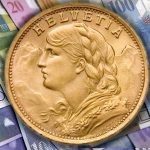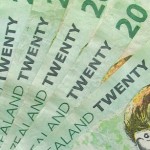Australian dollar gained ground against its US counterpart on trading Monday, after the preliminary results from Crimeas referendum, while an expert from Westpac Banking Corp. expected no further cuts in borrowing costs by the Reserve Bank of Australia (RBA) during this year.
AUD/USD hit a session high at 0.9063 at 6:05 GMT, after which consolidation followed at 0.9054, rising 0.24% for the day. Support was likely to be received at March 14th low, 0.8997, while resistance was to be encountered at March 13th high, 0.9104.
Preliminary results from Crimeas referendum yesterday revealed that 96% of voters in the peninsula supported leaving Ukraine and joining Russia. The Ukrainian government, the European Union and the United States consider this vote as illegitimate, while the Russian Federation said that it “fully met international norms.”
According to Germanys Foreign Minister Frank-Walter Steinmeier, a level of sanctions against Russia is to be decided on Monday.
At the same time, according to a statement by the White House, US President Barack Obama told Russian President Vladimir Putin the United States would not ever recognize the vote in the Black Sea peninsula.
The Australian currency received additional support, after Bill Evans, a chief economist at Westpac Banking Corp., wrote in research that he no longer anticipated that the Reserve Bank of Australia will cut its benchmark interest rate during this year, citing improvement in Australian employment, consumer spending and business confidence.
In addition, earlier on Monday a report revealed that sales of new automobiles in the country increased 0.1% in February compared to a month ago, after in January sales dropped by a revised down 4.0% (3.5% drop previously). In annual terms, new auto sales fell 3.5% in February, after another 3.1% decrease in January.
This indicator is considered as providing clues over the tendency in consumer confidence in Australia. In case demand for expensive and durable goods increases, this signals consumers feel more confident about their future financial prospects, thus, they will be willing to spend larger amounts of money.
Meanwhile, at 12:30 GMT today the Federal Reserve is to release the results from its business survey of manufacturers in the area of New York. This is the first indicator to show the development of manufacturing activity in the United States during the current month. The median estimate by experts showed that the New York Empire Manufacturing Index probably advanced to a reading of 6.25 in March from 4.48 in February. Values above zero are indicative of expansion in the sector.
The gauge of industrial production in the United States probably climbed 0.2% in February compared to a month ago, when output declined 0.3%.
The Federal Reserve Bank policy makers are expected to hold a meeting on March 18th-19th. Experts projected that the bank will probably cut its monthly asset purchases, which tend to devalue the national currency, by another 10 billion USD. The central bank has reduced its monthly monetary stimulus to 65 billion USD this year from 85 billion USD in 2013.
On Friday a monthly survey by Thomson Reuters and the University of Michigan showed that the preliminary reading of their index of consumer confidence for the United States slowed down to 79.9 this month, which has been the lowest level since November. The final reading for February was 81.6, while experts had anticipated that the index will advance to 82.0 in March.
Elsewhere, the Aussie was gaining against the euro, with EUR/AUD cross down 0.66% on a daily basis to trade at 1.5315 at 7:56 GMT. AUD/NZD was gaining 0.29% to trade at 1.0610 at 7:57 GMT. The pair earlier touched a daily high at 1.0613, or the highest point since March 13th.





